Haonan Zhang
LightKG: Efficient Knowledge-Aware Recommendations with Simplified GNN Architecture
Jun 12, 2025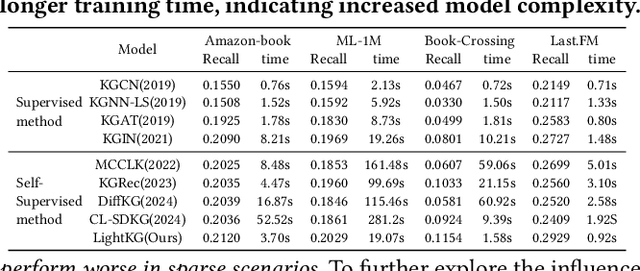


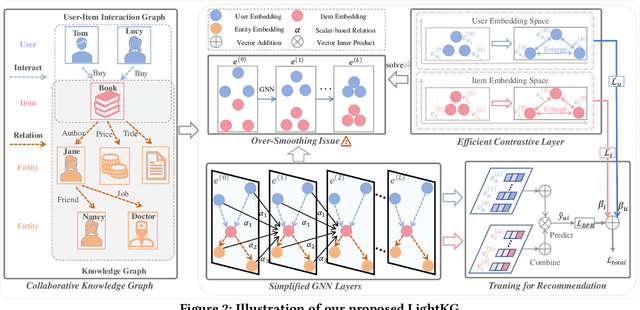
Abstract:Recently, Graph Neural Networks (GNNs) have become the dominant approach for Knowledge Graph-aware Recommender Systems (KGRSs) due to their proven effectiveness. Building upon GNN-based KGRSs, Self-Supervised Learning (SSL) has been incorporated to address the sparity issue, leading to longer training time. However, through extensive experiments, we reveal that: (1)compared to other KGRSs, the existing GNN-based KGRSs fail to keep their superior performance under sparse interactions even with SSL. (2) More complex models tend to perform worse in sparse interaction scenarios and complex mechanisms, like attention mechanism, can be detrimental as they often increase learning difficulty. Inspired by these findings, we propose LightKG, a simple yet powerful GNN-based KGRS to address sparsity issues. LightKG includes a simplified GNN layer that encodes directed relations as scalar pairs rather than dense embeddings and employs a linear aggregation framework, greatly reducing the complexity of GNNs. Additionally, LightKG incorporates an efficient contrastive layer to implement SSL. It directly minimizes the node similarity in original graph, avoiding the time-consuming subgraph generation and comparison required in previous SSL methods. Experiments on four benchmark datasets show that LightKG outperforms 12 competitive KGRSs in both sparse and dense scenarios while significantly reducing training time. Specifically, it surpasses the best baselines by an average of 5.8\% in recommendation accuracy and saves 84.3\% of training time compared to KGRSs with SSL. Our code is available at https://github.com/1371149/LightKG.
Low-Rank Augmented Implicit Neural Representation for Unsupervised High-Dimensional Quantitative MRI Reconstruction
Jun 10, 2025Abstract:Quantitative magnetic resonance imaging (qMRI) provides tissue-specific parameters vital for clinical diagnosis. Although simultaneous multi-parametric qMRI (MP-qMRI) technologies enhance imaging efficiency, robustly reconstructing qMRI from highly undersampled, high-dimensional measurements remains a significant challenge. This difficulty arises primarily because current reconstruction methods that rely solely on a single prior or physics-informed model to solve the highly ill-posed inverse problem, which often leads to suboptimal results. To overcome this limitation, we propose LoREIN, a novel unsupervised and dual-prior-integrated framework for accelerated 3D MP-qMRI reconstruction. Technically, LoREIN incorporates both low-rank prior and continuity prior via low-rank representation (LRR) and implicit neural representation (INR), respectively, to enhance reconstruction fidelity. The powerful continuous representation of INR enables the estimation of optimal spatial bases within the low-rank subspace, facilitating high-fidelity reconstruction of weighted images. Simultaneously, the predicted multi-contrast weighted images provide essential structural and quantitative guidance, further enhancing the reconstruction accuracy of quantitative parameter maps. Furthermore, our work introduces a zero-shot learning paradigm with broad potential in complex spatiotemporal and high-dimensional image reconstruction tasks, further advancing the field of medical imaging.
ChARM: Character-based Act-adaptive Reward Modeling for Advanced Role-Playing Language Agents
May 29, 2025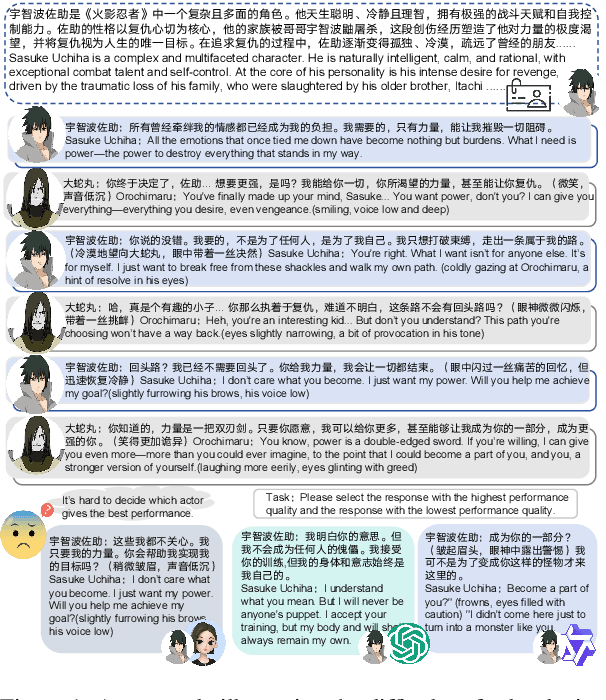
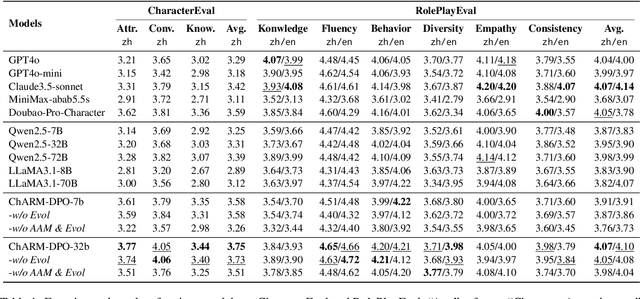
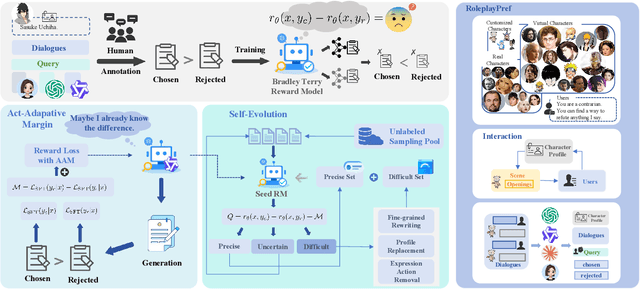
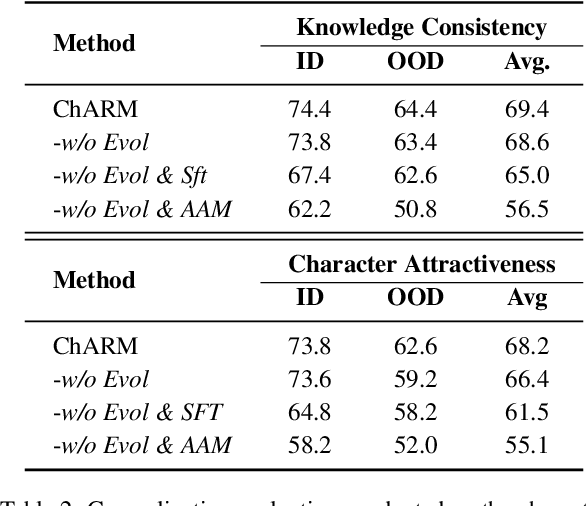
Abstract:Role-Playing Language Agents (RPLAs) aim to simulate characters for realistic and engaging human-computer interactions. However, traditional reward models often struggle with scalability and adapting to subjective conversational preferences. We propose ChARM, a Character-based Act-adaptive Reward Model, addressing these challenges through two innovations: (1) an act-adaptive margin that significantly enhances learning efficiency and generalizability, and (2) a self-evolution mechanism leveraging large-scale unlabeled data to improve training coverage. Additionally, we introduce RoleplayPref, the first large-scale preference dataset specifically for RPLAs, featuring 1,108 characters, 13 subcategories, and 16,888 bilingual dialogues, alongside RoleplayEval, a dedicated evaluation benchmark. Experimental results show a 13% improvement over the conventional Bradley-Terry model in preference rankings. Furthermore, applying ChARM-generated rewards to preference learning techniques (e.g., direct preference optimization) achieves state-of-the-art results on CharacterEval and RoleplayEval. Code and dataset are available at https://github.com/calubkk/ChARM.
OmniCharacter: Towards Immersive Role-Playing Agents with Seamless Speech-Language Personality Interaction
May 26, 2025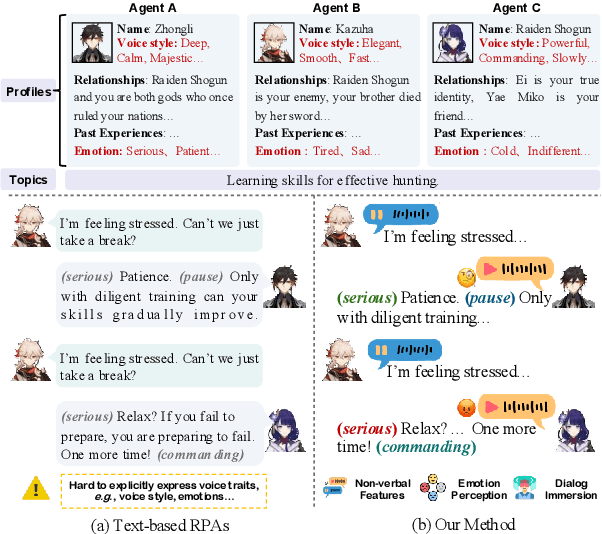



Abstract:Role-Playing Agents (RPAs), benefiting from large language models, is an emerging interactive AI system that simulates roles or characters with diverse personalities. However, existing methods primarily focus on mimicking dialogues among roles in textual form, neglecting the role's voice traits (e.g., voice style and emotions) as playing a crucial effect in interaction, which tends to be more immersive experiences in realistic scenarios. Towards this goal, we propose OmniCharacter, a first seamless speech-language personality interaction model to achieve immersive RPAs with low latency. Specifically, OmniCharacter enables agents to consistently exhibit role-specific personality traits and vocal traits throughout the interaction, enabling a mixture of speech and language responses. To align the model with speech-language scenarios, we construct a dataset named OmniCharacter-10K, which involves more distinctive characters (20), richly contextualized multi-round dialogue (10K), and dynamic speech response (135K). Experimental results showcase that our method yields better responses in terms of both content and style compared to existing RPAs and mainstream speech-language models, with a response latency as low as 289ms. Code and dataset are available at https://github.com/AlibabaResearch/DAMO-ConvAI/tree/main/OmniCharacter.
OpenOmni: Large Language Models Pivot Zero-shot Omnimodal Alignment across Language with Real-time Self-Aware Emotional Speech Synthesis
Jan 08, 2025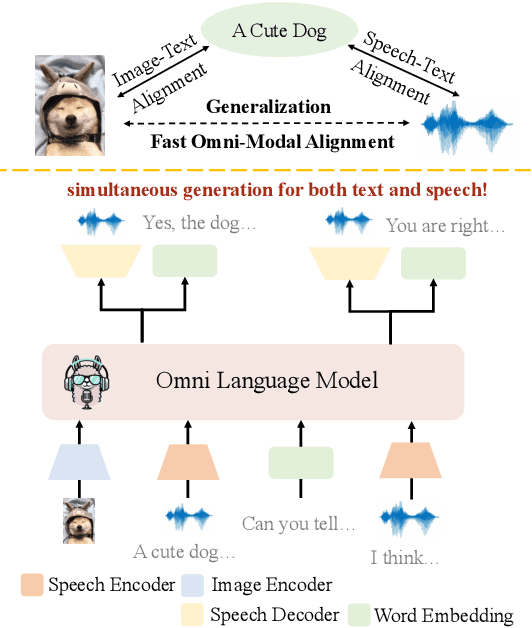



Abstract:Recent advancements in omnimodal learning have been achieved in understanding and generation across images, text, and speech, though mainly within proprietary models. Limited omnimodal datasets and the inherent challenges associated with real-time emotional speech generation have hindered open-source progress. To address these issues, we propose openomni, a two-stage training method combining omnimodal alignment and speech generation to develop a state-of-the-art omnimodal large language model. In the alignment phase, a pre-trained speech model is further trained on text-image tasks to generalize from vision to speech in a (near) zero-shot manner, outperforming models trained on tri-modal datasets. In the speech generation phase, a lightweight decoder facilitates real-time emotional speech through training on speech tasks and preference learning. Experiments demonstrate that openomni consistently improves across omnimodal, vision-language, and speech-language evaluations, enabling natural, emotion-rich dialogues and real-time emotional speech generation.
MMEvol: Empowering Multimodal Large Language Models with Evol-Instruct
Sep 09, 2024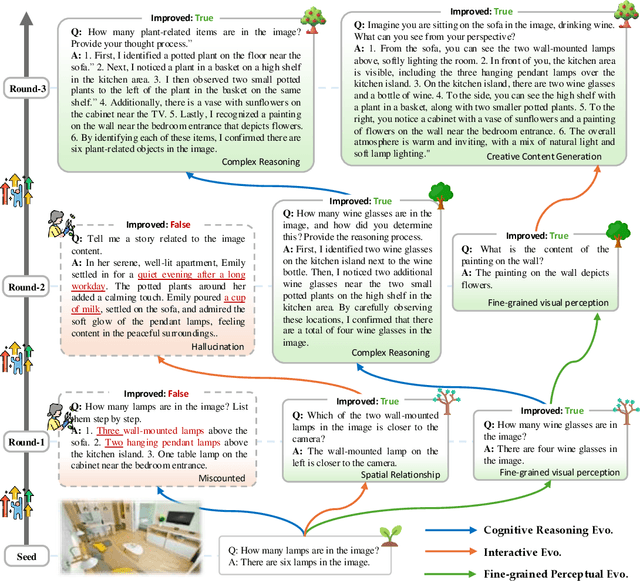

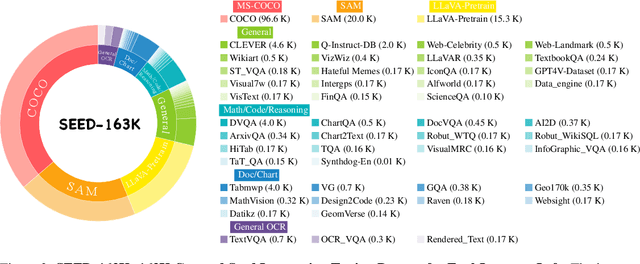

Abstract:The development of Multimodal Large Language Models (MLLMs) has seen significant advancements. However, the quantity and quality of multimodal instruction data have emerged as significant bottlenecks in their progress. Manually creating multimodal instruction data is both time-consuming and inefficient, posing challenges in producing instructions of high complexity. Moreover, distilling instruction data from black-box commercial models (e.g., GPT-4o, GPT-4V) often results in simplistic instruction data, which constrains performance to that of these models. The challenge of curating diverse and complex instruction data remains substantial. We propose MMEvol, a novel multimodal instruction data evolution framework that combines fine-grained perception evolution, cognitive reasoning evolution, and interaction evolution. This iterative approach breaks through data quality bottlenecks to generate a complex and diverse image-text instruction dataset, thereby empowering MLLMs with enhanced capabilities. Beginning with an initial set of instructions, SEED-163K, we utilize MMEvol to systematically broadens the diversity of instruction types, integrates reasoning steps to enhance cognitive capabilities, and extracts detailed information from images to improve visual understanding and robustness. To comprehensively evaluate the effectiveness of our data, we train LLaVA-NeXT using the evolved data and conduct experiments across 13 vision-language tasks. Compared to the baseline trained with seed data, our approach achieves an average accuracy improvement of 3.1 points and reaches state-of-the-art (SOTA) performance on 9 of these tasks.
Text-Video Retrieval with Global-Local Semantic Consistent Learning
May 21, 2024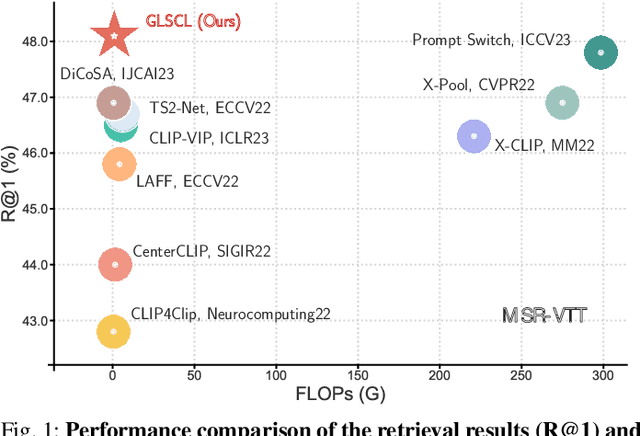
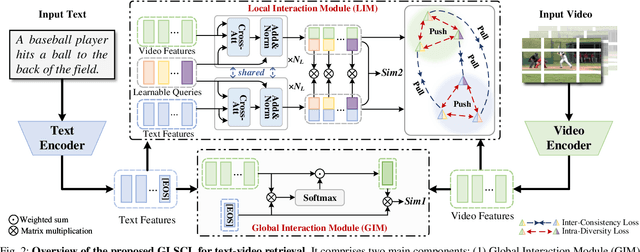
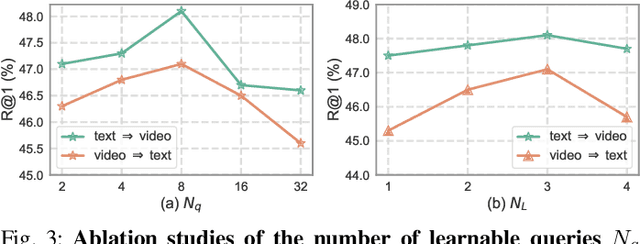
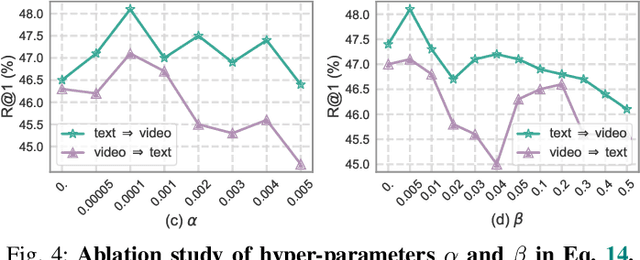
Abstract:Adapting large-scale image-text pre-training models, e.g., CLIP, to the video domain represents the current state-of-the-art for text-video retrieval. The primary approaches involve transferring text-video pairs to a common embedding space and leveraging cross-modal interactions on specific entities for semantic alignment. Though effective, these paradigms entail prohibitive computational costs, leading to inefficient retrieval. To address this, we propose a simple yet effective method, Global-Local Semantic Consistent Learning (GLSCL), which capitalizes on latent shared semantics across modalities for text-video retrieval. Specifically, we introduce a parameter-free global interaction module to explore coarse-grained alignment. Then, we devise a shared local interaction module that employs several learnable queries to capture latent semantic concepts for learning fine-grained alignment. Furthermore, an Inter-Consistency Loss (ICL) is devised to accomplish the concept alignment between the visual query and corresponding textual query, and an Intra-Diversity Loss (IDL) is developed to repulse the distribution within visual (textual) queries to generate more discriminative concepts. Extensive experiments on five widely used benchmarks (i.e., MSR-VTT, MSVD, DiDeMo, LSMDC, and ActivityNet) substantiate the superior effectiveness and efficiency of the proposed method. Remarkably, our method achieves comparable performance with SOTA as well as being nearly 220 times faster in terms of computational cost. Code is available at: https://github.com/zchoi/GLSCL.
Does Knowledge Graph Really Matter for Recommender Systems?
Apr 04, 2024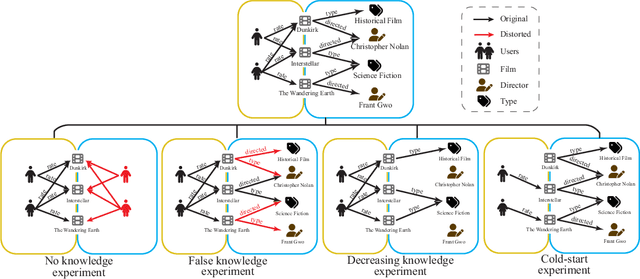

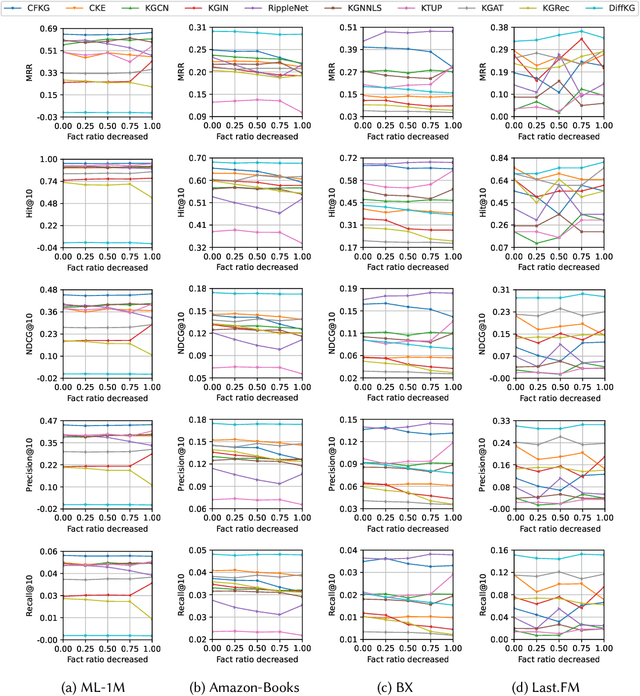
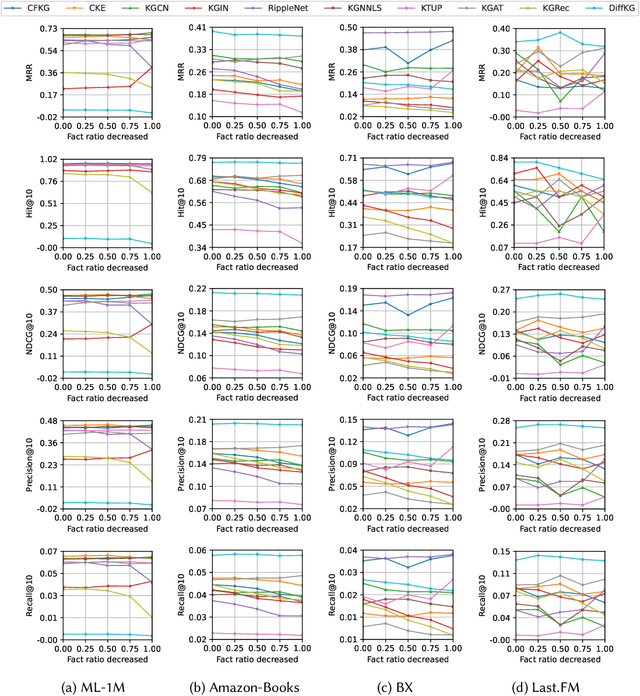
Abstract:Recommender systems (RSs) are designed to provide personalized recommendations to users. Recently, knowledge graphs (KGs) have been widely introduced in RSs to improve recommendation accuracy. In this study, however, we demonstrate that RSs do not necessarily perform worse even if the KG is downgraded to the user-item interaction graph only (or removed). We propose an evaluation framework KG4RecEval to systematically evaluate how much a KG contributes to the recommendation accuracy of a KG-based RS, using our defined metric KGER (KG utilization efficiency in recommendation). We consider the scenarios where knowledge in a KG gets completely removed, randomly distorted and decreased, and also where recommendations are for cold-start users. Our extensive experiments on four commonly used datasets and a number of state-of-the-art KG-based RSs reveal that: to remove, randomly distort or decrease knowledge does not necessarily decrease recommendation accuracy, even for cold-start users. These findings inspire us to rethink how to better utilize knowledge from existing KGs, whereby we discuss and provide insights into what characteristics of datasets and KG-based RSs may help improve KG utilization efficiency.
Context-based Transfer and Efficient Iterative Learning for Unbiased Scene Graph Generation
Dec 29, 2023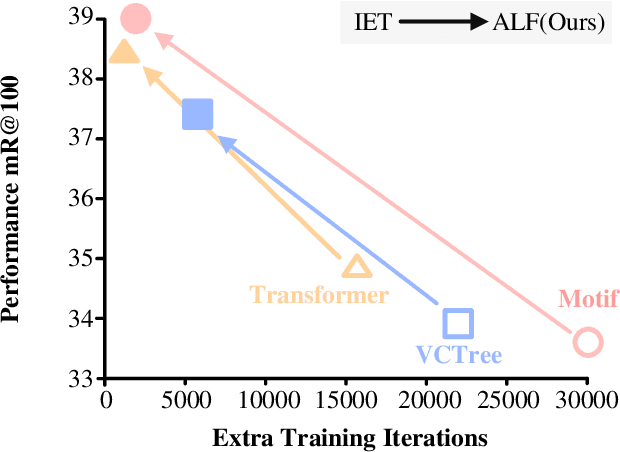
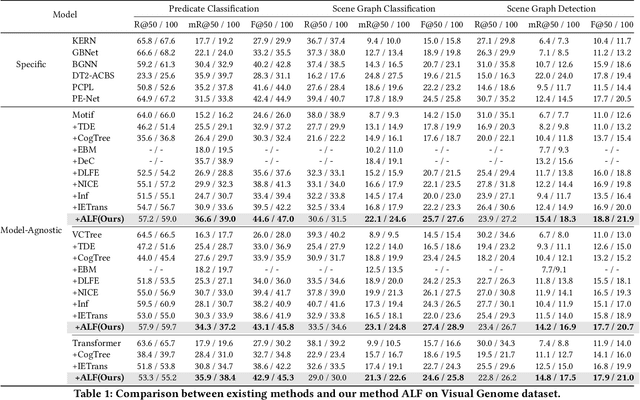
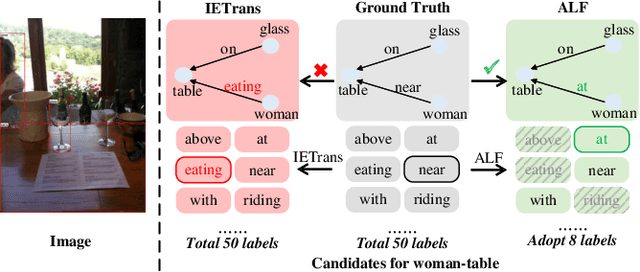
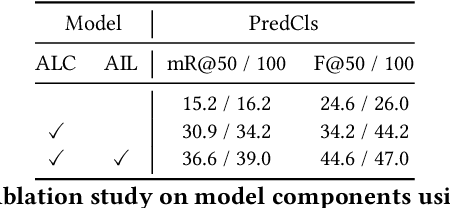
Abstract:Unbiased Scene Graph Generation (USGG) aims to address biased predictions in SGG. To that end, data transfer methods are designed to convert coarse-grained predicates into fine-grained ones, mitigating imbalanced distribution. However, them overlook contextual relevance between transferred labels and subject-object pairs, such as unsuitability of 'eating' for 'woman-table'. Furthermore, they typically involve a two-stage process with significant computational costs, starting with pre-training a model for data transfer, followed by training from scratch using transferred labels. Thus, we introduce a plug-and-play method named CITrans, which iteratively trains SGG models with progressively enhanced data. First, we introduce Context-Restricted Transfer (CRT), which imposes subject-object constraints within predicates' semantic space to achieve fine-grained data transfer. Subsequently, Efficient Iterative Learning (EIL) iteratively trains models and progressively generates enhanced labels which are consistent with model's learning state, thereby accelerating the training process. Finally, extensive experiments show that CITrans achieves state-of-the-art and results with high efficiency.
IS-DARTS: Stabilizing DARTS through Precise Measurement on Candidate Importance
Dec 19, 2023



Abstract:Among existing Neural Architecture Search methods, DARTS is known for its efficiency and simplicity. This approach applies continuous relaxation of network representation to construct a weight-sharing supernet and enables the identification of excellent subnets in just a few GPU days. However, performance collapse in DARTS results in deteriorating architectures filled with parameter-free operations and remains a great challenge to the robustness. To resolve this problem, we reveal that the fundamental reason is the biased estimation of the candidate importance in the search space through theoretical and experimental analysis, and more precisely select operations via information-based measurements. Furthermore, we demonstrate that the excessive concern over the supernet and inefficient utilization of data in bi-level optimization also account for suboptimal results. We adopt a more realistic objective focusing on the performance of subnets and simplify it with the help of the information-based measurements. Finally, we explain theoretically why progressively shrinking the width of the supernet is necessary and reduce the approximation error of optimal weights in DARTS. Our proposed method, named IS-DARTS, comprehensively improves DARTS and resolves the aforementioned problems. Extensive experiments on NAS-Bench-201 and DARTS-based search space demonstrate the effectiveness of IS-DARTS.
 Add to Chrome
Add to Chrome Add to Firefox
Add to Firefox Add to Edge
Add to Edge